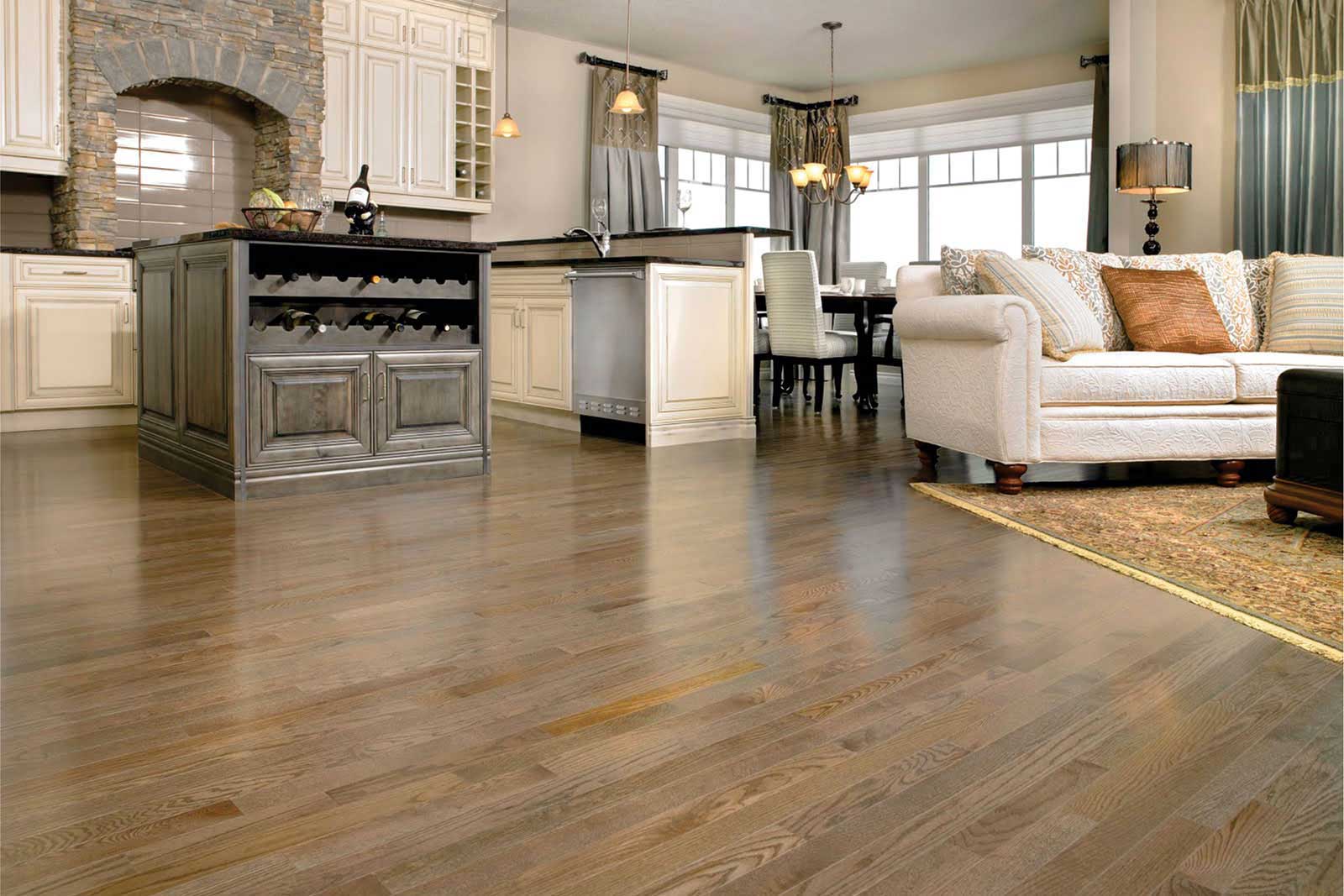
The market abounds in various hardwood flooring options, so if you’re up to a flooring or re-flooring project, you’ll have many great options to choose from. The range of hardwood floors offered these days, both in traditional and online stores is bigger than ever. Moreover, as the number of suppliers of hardwood flooring is quite significant, you’ll most certainly find one that is going to offer you a great deal tailored to your needs. Nowadays, ever more people get rid of carpets and rugs in their homes, plumping for an easier to maintain, natural and good looking hardwood flooring. And in my opinion, there’s no better choice than quality hardwood flooring. But when taking a decision to get yourself a hardwood floor, you may wonder what type of flooring to choose.
In general, there are two types of hardwood flooring: solid and engineered hardwood flooring. People often tend to think that engineered wood flooring is like laminate flooring, but they couldn’t be more wrong. Laminate flooring is a synthetic flooring product made up of a few layers that are fused together in the lamination process. Thanks to a photographic applique layer, it is made in such a way as to imitate real hardwood flooring. While Engineered wood flooring is a man-made flooring board which is made up of layers of real wood, which are adhered together to form a core board. Then, on the very top, there is a top layer made of solid hardwood, or the so-called lamella.
Engineered Hardwood
Engineered hard wood flooring is perfect for use in any interior in your house or flat, but it’s especially recommended for the rooms where you expect considerable humidity or temperature fluctuations. Bathrooms and kitchens are the interiors where you wouldn’t usually fit solid hardwood flooring, but you definitely could install engineered hardwood flooring there. In these interiors moisture and temperature levels rise and fall very fast and quite frequently, which means that solid hardwood flooring would warp and bow fast, if installed there, making the floor look unsightly and resulting in uneven surface and gaps. Due to its structure, engineered hardwood floors don’t expand and contract as significantly as solid hardwood floors, so they are better suited for such ambient conditions and will withstand them without causing trouble and incurring unnecessary expenses.
What’s more, engineered hardwood flooring can be installed over under-floor heating (UFH). Now, you probably begin to understand why this hardwood flooring option is so often preferred to solid hardwood. Yet, some claim that only solid hardwood flooring is the real hardwood flooring, regardless of the fact that engineered hardwood floors looks more or less the same.
Solid Hardwood
Solid hardwood floors are manufactured by milling planks from a single piece of timber. This type of hardwood flooring has been popular for centuries as a durable and tested flooring option and was considered a top choice by the upper class. That’s why you can come across various kinds of solid hardwood flooring in a number of stately homes and castles.
Hardwood Grade
Regardless of whether you go for solid or engineered hardwood flooring, you have a range of various grades and finishes to choose from that will be appropriate both in terms of your budget and the intended colour scheme and your individual preferences.
When lumbered, hardwood is classified and divided into various grades, depending on the number of knots it has and, consistency of its colour as well as the amount of sap. In general, when the colour is more consistent, the wood has smaller and fewer knots and low content of sap, the grade of the wood is higher, which of course has impact on the price, which rises along with the rise in the grade classification. But, remember that the grade of wood you will opt for is an individual thing.
No matter whether you go for solid or engineered hardwood flooring, there is a whole range of grades you will e able to choose from: prime, select, natural or rustic grades are all there waiting for you. Prime grade wood is considered the finest, with the lowest amount of sap and the lowest number of knots, which means it also has the most uniform colour. Obviously, it is also the most expensive among the grades of wood. When going down the scale to rustic grade, you can see a higher number and size of knots, which entails lower consistency in terms of colour and a higher amount of sap. Looking this way, you can see the price fall as you go down the scale. The choice of the suitable option is yours – when making a decision think about the final look you want to achieve and consider your budget.
Hardwood Finish
As regards finish, you’ll have plenty of options, irrespective of whether you pick solid or engineered hardwood flooring. Today, many different types of finishes are available on the market, starting from hardwearing lacquered finishes, available even with UV filters to protect the flooring from sunshine, ending with natural looking matt oiled finishes, with a lot of different options in between. You may want your floor to be dark almost black in colour or strive for a light, nearly white look – there’s a colour and finish that will meet your needs and expectations. Even aged and distressed hardwood flooring offered these days by flooring suppliers is so convincing that you would be sure it’s actually very old.
| Mon-Fri | 8:00AM – 5:00PM |
| Saturday | 10:00AM – 4:00PM |
| Sunday | 11:00AM – 3:00PM |





.svg)
.svg)